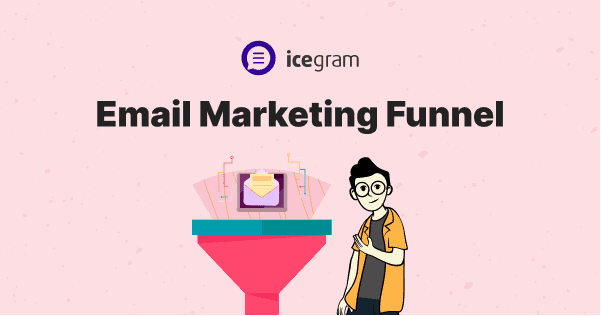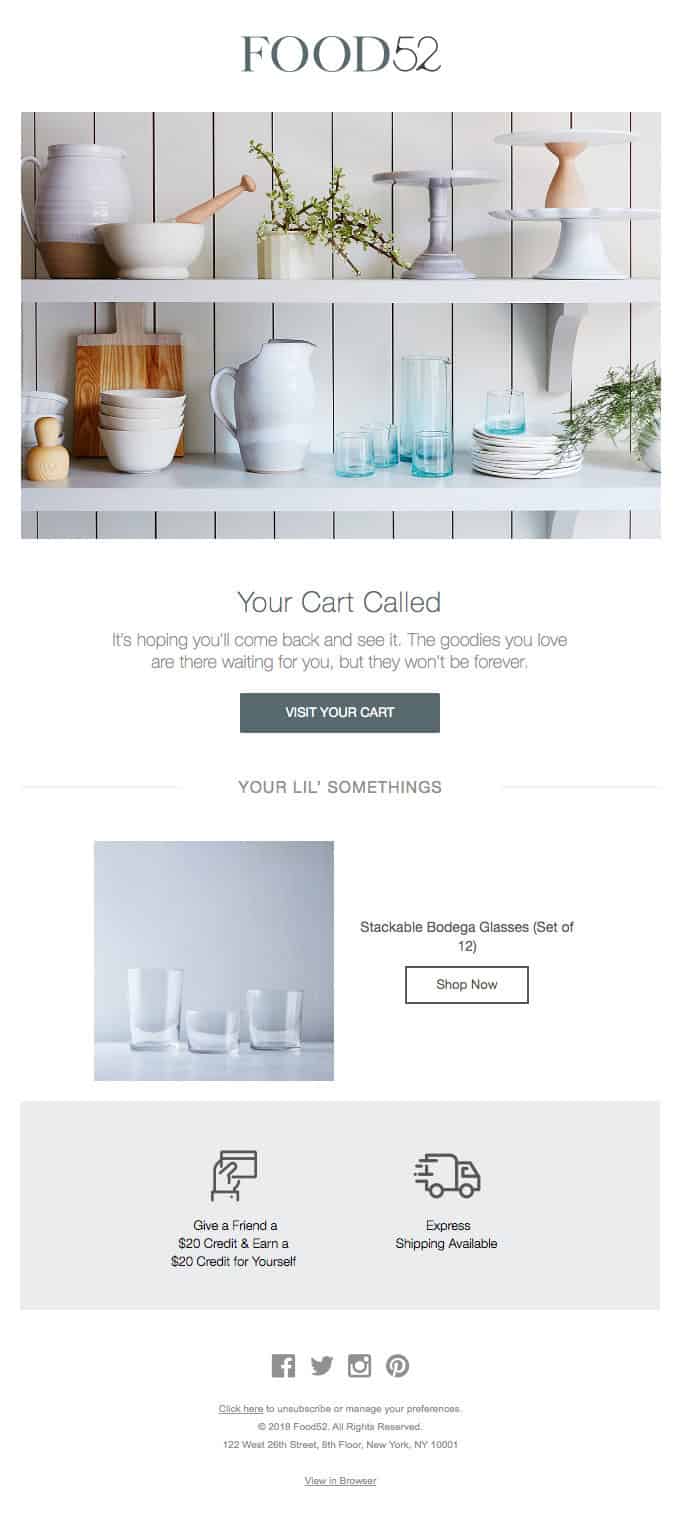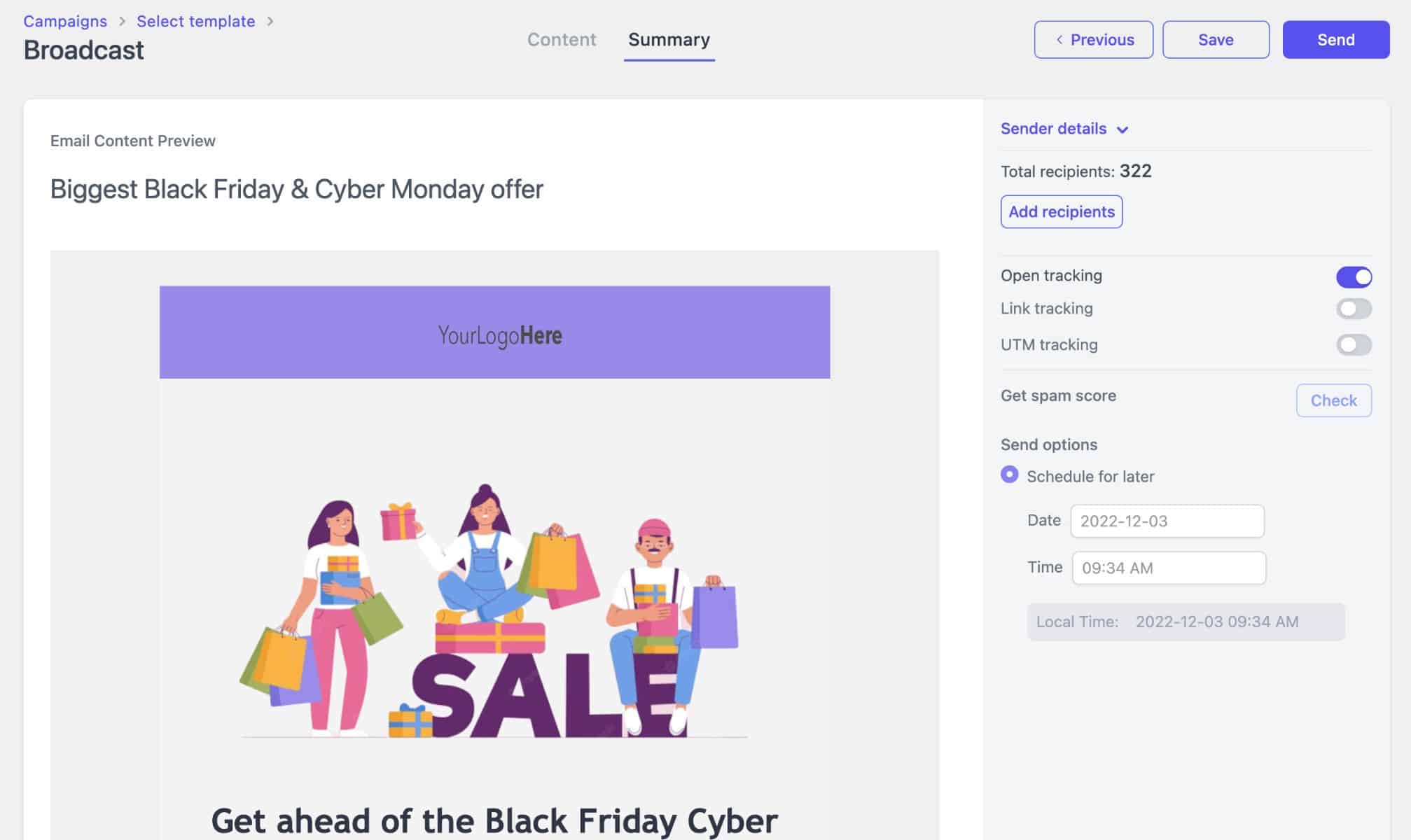Conversions might seem easy, but there is a lot more than simply emails to grab your recipient’s attention.
In a nutshell, it means creating a robust email marketing funnel that has no leaks and takes your audience toward conversions.
Despite having a lot of boxes to tick, we are making the process easy for you by diving deeper!
Let’s understand it in more detail!
What is an email marketing funnel?
An email marketing funnel is a series of automated emails sent to a specific audience to convert them into paying customers.
The funnel is designed to take the subscriber on a journey that kickstarts with building awareness and ends with a purchase.
To boost sales, you must make them aware of your offering and show your audience how it solves their problems.
To get started, you must build an email list via lead magnets or opt-ins used on your website landing pages and other promotional channels.
A sequence of emails is then triggered based on specific audience actions that align with your business goals. The length of the sequence depends on the product type (one-time purchase or subscription-based), price point (high, mid, or low), and your business strategy.
Email marketing funnel: Benefits
Wondering why businesses go through the pain of creating an email marketing funnel?
We’d say the hard work is worth it. Here’s why:
- Increased conversion rates: By guiding subscribers through the funnel, you will be able to nurture leads and increase the possibilities of conversion.
- Cost-effective: Being one of the most cost-effective marketing strategies, and an email marketing funnel can help you maximize your ROI.
- Time-saving: Once you set up the funnel, it runs on autopilot, giving you more time to focus on other vital areas of your business.
- Personalization: By segmenting your audience and sending targeted emails, you can provide a highly personalized experience for your subscribers.
Email marketing funnel: Stages
The email marketing funnel is a process that marketers use to guide prospects and customers toward a desired outcome. This could mean making a purchase or signing up for a service.
Here is a graphical representation of the funnel stages for a better idea.
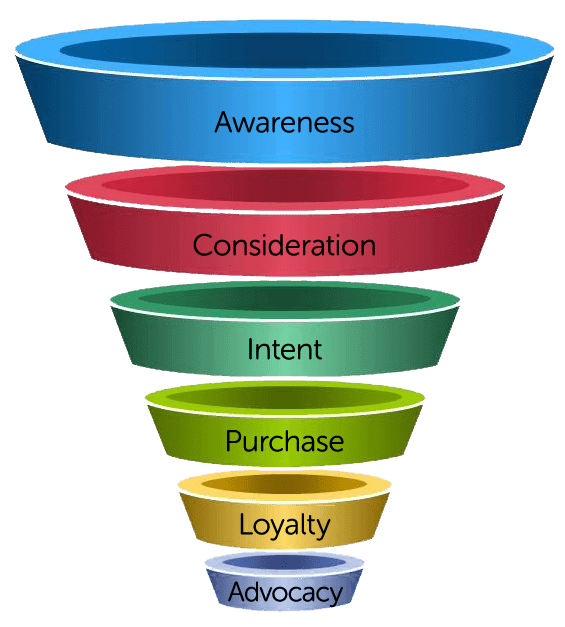
- Awareness: The first stage of the funnel is to raise awareness of your brand, product, or service. This can be achieved by using email marketing to introduce your business to potential customers and provide them with valuable information.
- Consideration: Once you have caught their attention, you must build interest. This can be achieved by highlighting the benefits of your product or service and how it can solve their problems.
- Intent: At this stage, you must convince your audience that your product or service is the best solution for their needs. You can achieve this by providing more detailed information and benefits and addressing any concerns or objections they may have.
- Purchase/conversion: Once the prospect is convinced that your solution is the perfect solution for them, they are more likely to convert. With a promising call-to-action, you can encourage them to take the next step. This could mean making a purchase or signing up for a free trial.
- Loyalty: After the customer has purchased, you must focus on building loyalty and retaining their business. This can be done by providing exceptional customer service and offering rewards or incentives for repeat purchases.
- Advocacy: The final stage is to turn your satisfied customers into advocates for your brand. This can be achieved by encouraging them to share their positive experiences on social media, which offers an opportunity for customer references.
By following these email marketing funnel stages, you can effectively guide your prospects and customers toward a desired outcome. This further helps you build a loyal customer base that boosts your business over time.
Eight steps to build an email marketing funnel
Creating a flawed funnel might not get you where you want to be. Hence, the need for a sure-fire email marketing funnel.
Here’s how to create the perfect email marketing funnel for your business:
Define your target audience
The first step in creating an email marketing funnel is to identify your target audience. You must understand your ideal customer, their pain points, interests, possible solutions, their desired communication style, desired platforms, and a lot more.
To access this information goldmine, you can check market research, website analytics, or surveys from existing customers.
Create an opt-in form
Once you have defined your target audience, you must create an opt-in form on your website or landing page.
The form should be simple and easy to fill out, asking for only the necessary information, such as the subscriber’s name and email address.
Offer a lead magnet
A lead magnet is a valuable resource for your subscribers in exchange for their email addresses.
These resources can be e-books, checklists, webinars, or any other resource that provides value to your audience. You must note that your lead magnet must be relevant to your target audience and align with your brand values.
Types of emails
Identifying various types of emails will help you put a finger on the email that is most likely to work for your funnel.
Check them out:
Welcome email
Once a subscriber has signed up for your email list, it’s essential to send a welcome email.
This email should thank the subscriber for joining your list, introduce your brand and mission, and set expectations for the type of content they can expect.
You can also offer a discount code or freebie to show appreciation for their support.
Here’s an example from Casper:
(Source: Really Good Emails)
Nurturing emails
After the welcome email, it’s time to start nurturing your subscribers with a series of emails designed to educate and build trust.
These emails can include blog posts, case studies, testimonials, or any other valuable content that may solve your audience’s problems.
However, your content must be personalized, engaging, and aligned with your brand’s values.
Promotion emails
Now that the trust is strengthened, it’s time to start promoting your products or services. These emails can include limited-time offers, product launches, or exclusive deals.
Your promotional emails must be compelling and persuasive. It must also highlight your product benefits and how they can solve your subscriber’s pain points.
Here’s an example of a promotion email from Headspace:
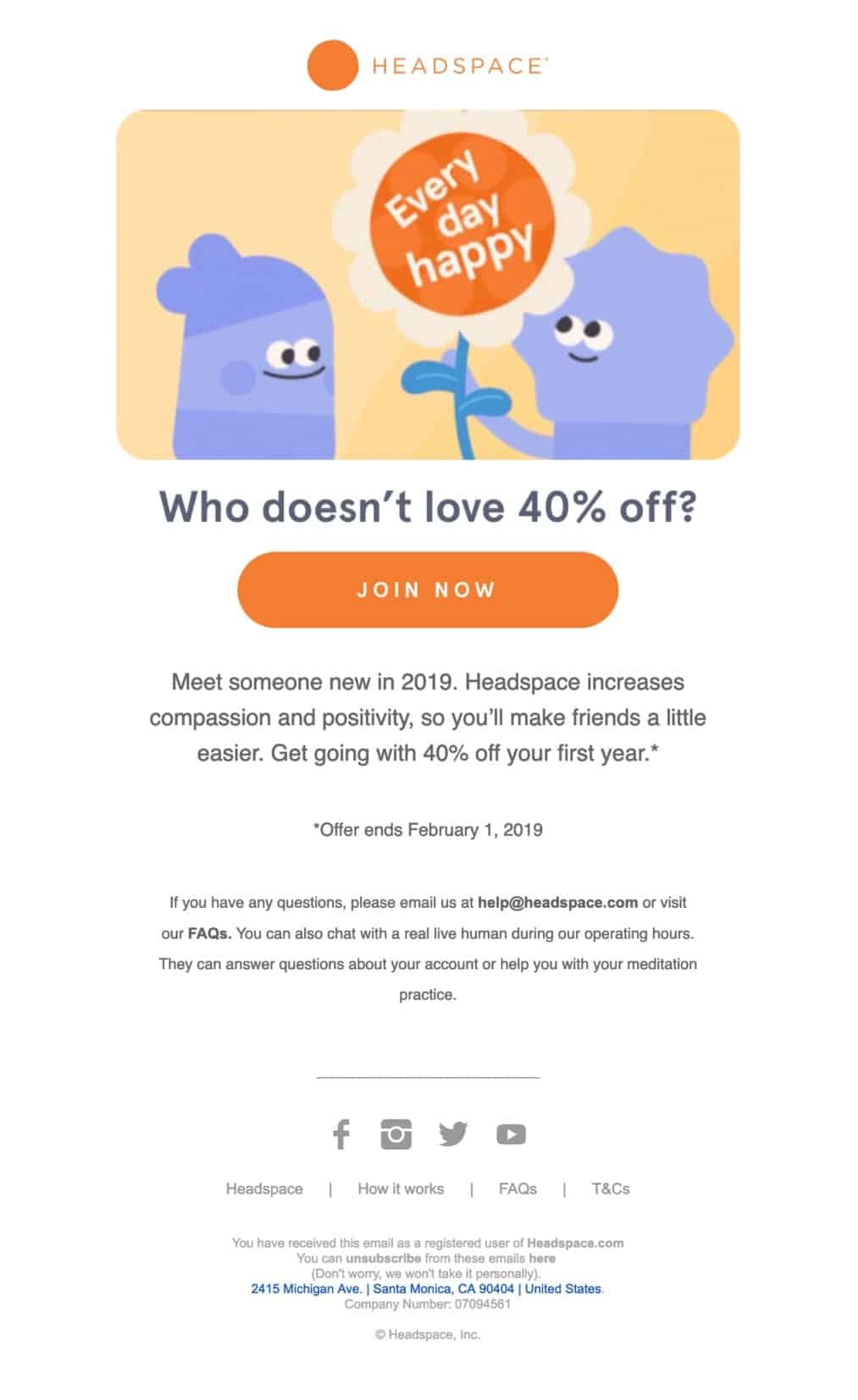
(Source: Getvero)
Cart abandonment emails
One of the most effective ways to increase conversions is by sending cart abandonment emails.
When a customer adds products to their cart but doesn’t purchase, you can then send a reminder email. This email encourages them to come back and complete the purchase.
You can also offer a limited-time discount or free shipping to incentivize the purchase.
Here’s an example from Food52:
(Source: AWeber)
Post-purchase emails
Once a customer has purchased, you must follow up with a post-purchase email.
This email should thank the customer for their purchase, offer a discount code for their next purchase, and request a review or feedback.
Post-purchase emails are an excellent opportunity to build customer loyalty and encourage repeat purchases.
Email marketing funnel: Examples
Here are a few email templates you can refer to in creating your own for your email marketing funnel.
Welcome email template
Subject line: Welcome to [Your Brand Name]
Dear [Subscriber Name],
We’re excited to have you as part of our family!
At [Your Brand Name], our mission is to [insert your brand’s mission].
We’re looking forward to sharing valuable content and offers with you in the future.
For any questions or feedback, reply to this email.
Best regards,
[Your Name]
Nurture email template
Subject line: This will help you achieve your goals
Dear [Subscriber Name],
As a valued subscriber, we want to provide you with valuable content that can help you solve your problems.
In today’s email, we’re sharing a [insert content types, such as blog post, case study, or webinar] that we believe will be of interest to you.
[Insert brief summary of the content and how it can help the subscriber].
Click the link below to read/watch/listen to the full content.
[Insert CTA button or link to the content]
Thank you for your continued support. We look forward to providing you with more valuable content in the coming days.
Best regards,
[Your Name]
Promotion email template
Subject line: [Product/Service name] now available at [Your Brand Name]
Dear [Subscriber Name],
We’re excited to announce the launch of [Product/Service name] at [Your Brand Name].
Our team has worked tirelessly to create a product/service that solves [insert pain point that your product/service solves].
Here are some of the benefits of [Product/Service name]:
- Benefit 1
- Benefit 2
- Benefit 3
For a limited time, we’re offering a [insert discount or offer] for our subscribers. Don’t miss out on this opportunity to [insert benefit of the offer].
[Insert CTA button or link to the product/service]
Thank you for your continued support.
We can’t wait to see how [Product/Service name] can help you achieve your goals.
Best regards,
[Your Name]
Cart abandonment email template
Subject line: You forgot something in your cart!
Dear [Subscriber Name],
We noticed that you left something in your cart without completing your purchase.
We understand that life can get busy, but we don’t want you to miss out on [insert benefits of the product]!
As a special incentive, we’re offering [insert discount or free shipping] on your order if you complete your purchase within the next [insert timeframe].
Click the button below to complete your purchase.
[Insert CTA button or link to the cart]
Thank you for considering [Your Brand Name].
We look forward to serving you.
Best regards,
[Your Name]
Post-purchase email template
Subject line: Thank you for your purchase!
Dear [Customer Name],
Thank you for choosing [Your Brand Name].
We’re committed to providing you with the best possible experience.
As a thank you for your purchase, we’d like to offer you a [insert discount or offer] on your next purchase.
Simply use the code [insert code] at checkout to redeem your offer.
We’d also love to hear your feedback on your recent purchase.
Please take a few minutes to share your experience with us.
Best regards,
[Your Name]
All-in-one WordPress suite for email marketing funnel
If you have a WordPress website and want to set up your email marketing funnel, without paying a hefty amount, try the Icegram plugins.
With Icegram WordPress plugins, you can:
- Create opt-in forms for your landing pages to collect leads.
- Embed opt-in forms in lead magnets.
- Offer incentives/build lists via pop-ups, hello bars, and other opt-in messages.
- Segment list and schedule emails.
- Send welcome emails, nurture emails, promotional emails, cart abandonment emails, and post-purchase emails.
- Get high-converting, and readymade email templates to craft emails faster.
Click here to learn more about Icegram plugins
Conclusion
Email marketing funnels can be a powerful tool for businesses to nurture leads and convert them into loyal customers.
However, it’s important to continuously track and optimize your funnel to ensure its effectiveness and introduce changes in your audience’s behavior and preferences.
With Icegram plugins, you can provide relevant and valuable content, segment your audience, and automate the process, thus creating a personalized and efficient funnel that drives engagement and revenue.
FAQ
What metrics should I track to measure funnel performance?
Key metrics include open rates, click-through rates, conversion rates, unsubscribe rates, and revenue per email. Monitoring these helps in optimizing each stage of the funnel.
How often should I send emails in my funnel?
The frequency depends on your industry and audience. Typically, sending 1-3 emails per week works well. Avoid overwhelming subscribers while maintaining engagement.
How do I optimize my email funnel over time?
Regularly analyze email performance, A/B test subject lines and content, update your segmentation strategy, and refine automation sequences based on subscriber behavior and feedback.

